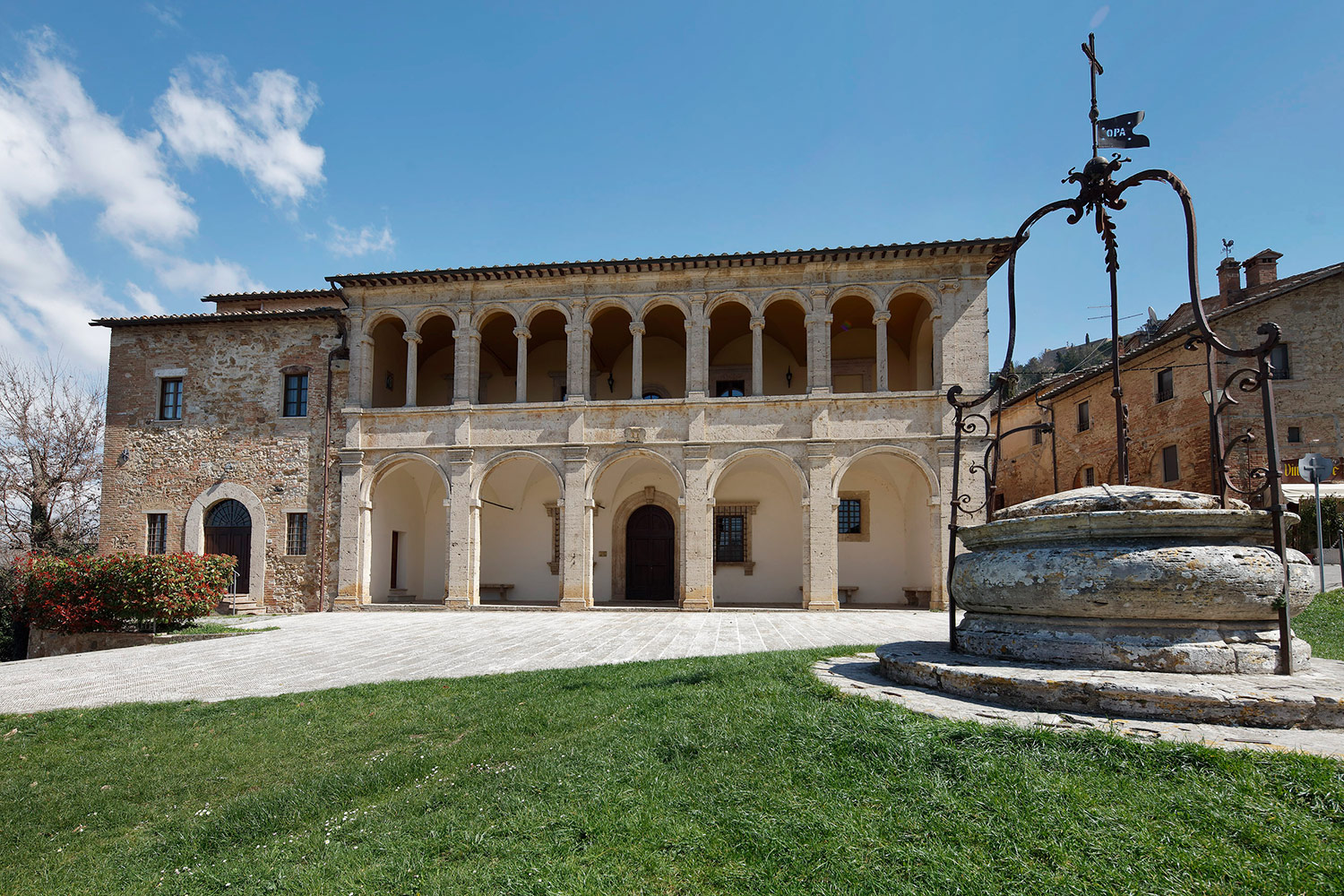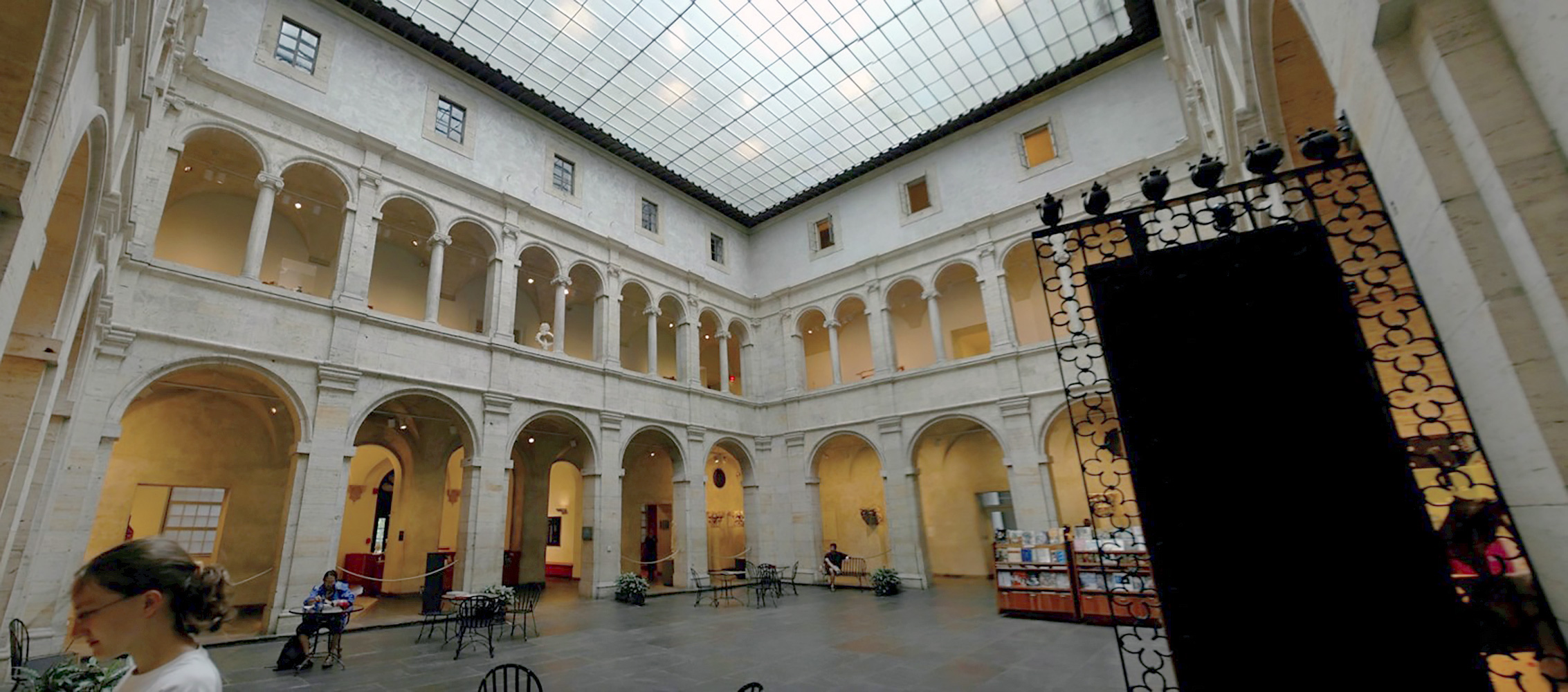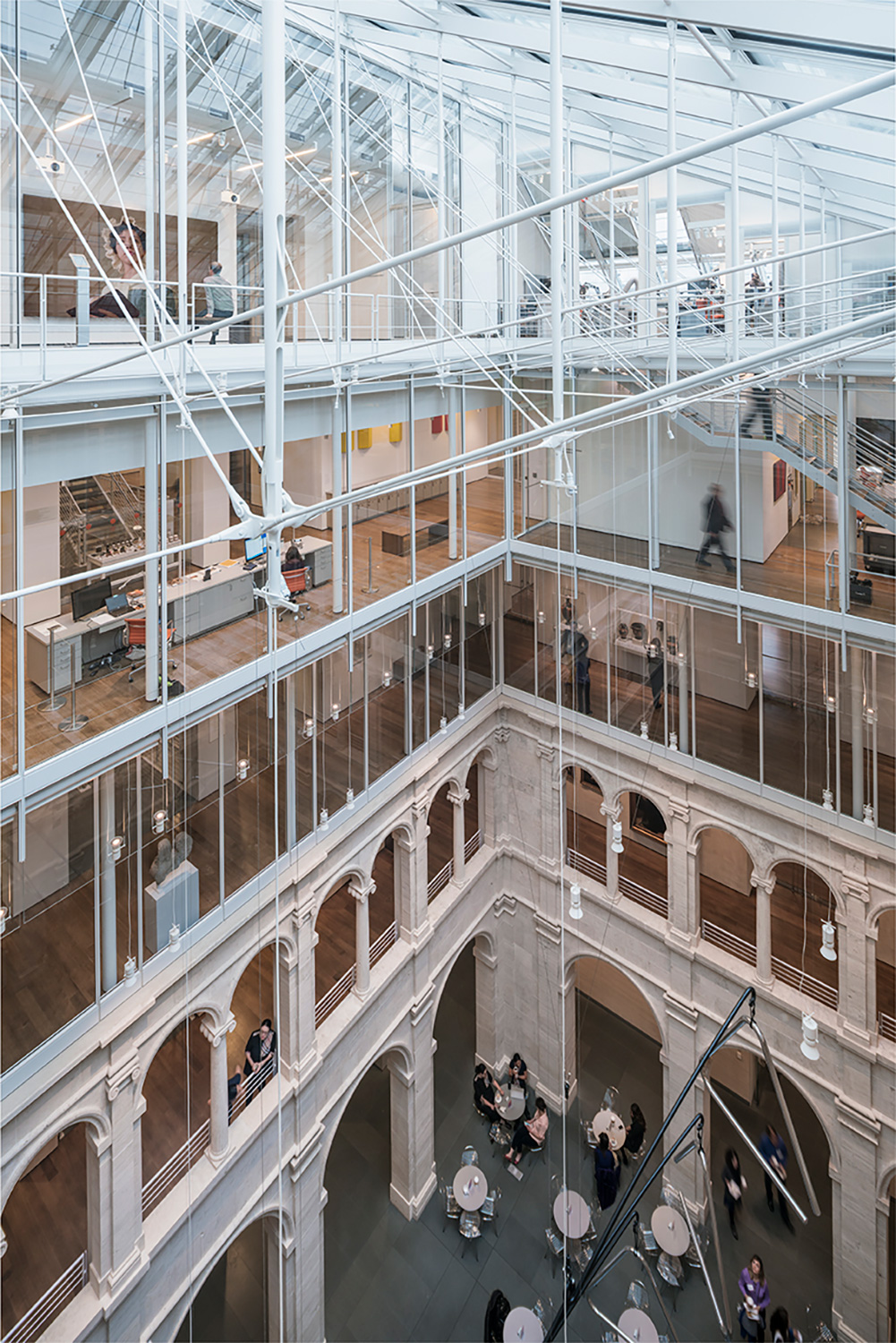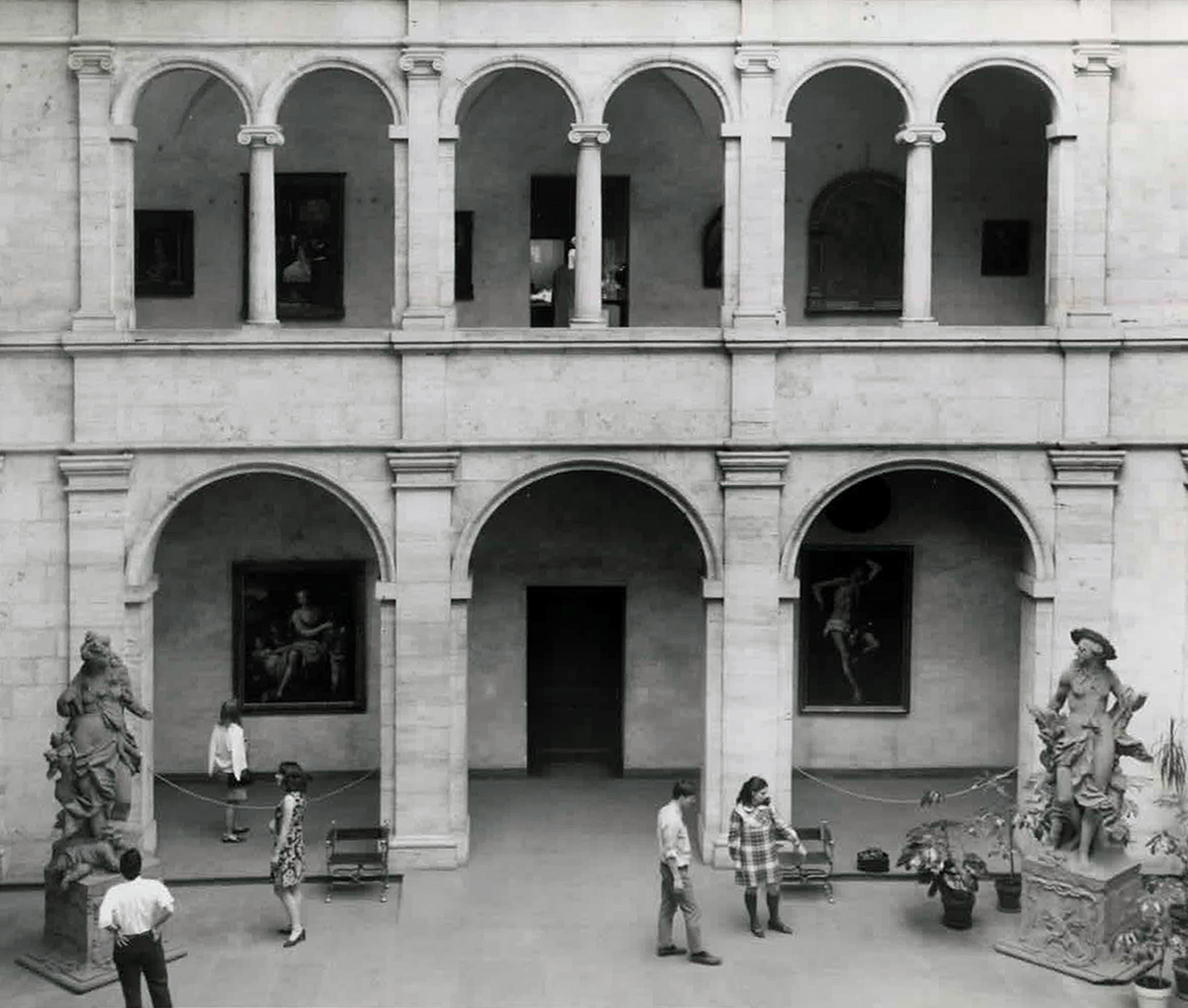On September 15, 1518, the cornerstone of the San Biagio Church in Montepulciano, Italy, was laid. The site eventually grew to include a cistern, bell tower, and canon’s house, designed by Florentine architect Antonio da Sangallo the Elder (1455–1534).
Landmark Occasion

This year, the Tuscan hilltop town and its church are celebrating the 500th anniversary of that momentous achievement. The Harvard Art Museums have special reason to mark the occasion as well: the striking white travertine arches that surround the museums’ Calderwood Courtyard were modeled after the facade of the canon’s house of San Biagio. To honor the connection, the museums are holding a series of Italian-themed programs throughout the year.
“Our courtyard evokes that moment in 16th-century Italy when San Biagio was built—a moment in the history of architecture when buildings were designed according to human scale, providing a sense of intimacy despite their monumentality and striking appearance,” said associate research curator Danielle Carrabino, who organized the schedule of courtyard-related events. “The courtyard is very special, and in celebrating it we want to focus on its versatility as well as individuals’ personal connections to the space.”
Looking Back, Looking Ahead
The programming has already begun; Carrabino kicked off the events with gallery talks earlier this year about the courtyard’s rich history. Designed in the 1920s by architectural firm Coolidge Shepley Bulfinch and Abbott (today known as Shepley Bulfinch, and still located in Boston), the courtyard is an almost perfect replica of the arches of the canon’s house. As Carrabino told visitors, the architects reproduced the Renaissance arches four times and turned them inward to form the courtyard’s sides, in effect creating a variety of entrances to the galleries.
Carrabino shared that Henry Richardson Shepley (Harvard Class of 1910), tasked with overseeing the courtyard design, was inspired by the arches on the canon’s house in Montepulciano while traveling as a postgraduate student at the École des Beaux-Arts. His sketchbooks (which Carrabino studied in the archives at Shepley Bulfinch and at the Library of Congress) contain his own drawings and photographs of the arches, as well as measurements of the arches’ dimensions. Some of these sketchbook entries were dated as early as 1913—testifying to his longstanding fascination with the architecture of the site. Indeed, it wasn’t until 14 years later, when the Fogg Museum opened in 1927, that his courtyard vision became a reality.
Carrabino’s research also took her to the Harvard University Archives, where she was able to examine syllabi from courses Shepley took as an undergraduate. Those answered the mystery of why Shepley had zeroed in on the facade of the canon’s house in the first place: San Biagio’s church, recognized as a quintessential early Renaissance church, was commonly studied by Harvard art history students. And “once you are at San Biagio,” Carrabino said, “when you turn around you’re facing the canon’s house.”
In 2008, renowned Italian architect Renzo Piano added his own distinctive stamp to the courtyard and its surroundings when he renovated and expanded the Harvard Art Museums. Piano re-envisioned the courtyard as an Italian piazza, a community space; added the building’s glass rooftop, or “light machine”; and expanded views of the courtyard from all five above-ground levels.
For those who missed Carrabino’s talks, there are a few more opportunities to learn about this iconic space. On April 27, Carrabino and Megan Schwenke, the museums’ senior archivist and records manager, will lead an Art Study Center Seminar in which they discuss archival materials related to the courtyard’s history—including historical photographs and correspondence between the architects and leaders of Harvard and the Fogg Museum.
Something for Everyone
History buffs can delve deeper into the courtyard’s rich past by accessing a new digital tool about both the church complex of San Biagio and the Calderwood Courtyard. The tool is available in English and Italian.
In addition, in September the museums will publish a commemorative book about the courtyard, with contributions by Carrabino and Mark Carroll (partner at Renzo Piano Building Workshop) and dazzling new photographs of the cherished space. The book will be available in the museums’ shop, along with a small assortment of merchandise based on and inspired by the courtyard.
Just across the courtyard, Jenny’s Cafe will offer a special Italian-inspired drink. And on certain ocassions, a recording of the San Biagio church bells (captured in person by Jeff Steward, the museums’ director of Digital Infrastructure and Emerging Technology) will be played in the courtyard.
Church of San Biagio’s bells
A recording of the bells, as they sound when played in Montepulciano, Italy, twice daily.
Starting in the summer, a series of temporary installations across four galleries will pay homage to the ancient Etruscan civilization, which once reigned throughout what is now Tuscany and surrounding regions. Co-curated by Carrabino and Theresa Huntsman, an Etruscan specialist and publications data manager for the Archaeological Exploration of Sardis, the installations will include both Etruscan art and Etruscan-inspired art, as well as an example of Etruscan pigments from the Forbes Pigment Collection. Reflecting the Harvard Art Museums’ diverse collections, the objects will be drawn from all three constituent museums (the Fogg, Busch-Reisinger, and Arthur M. Sackler Museums).
With its central location and pivotal role in Harvard Art Museums’ history, the Calderwood Courtyard is certainly never overlooked. But the opportunity to celebrate its multifaceted history makes 2018 a treat for anyone inspired by Italian culture or Renaissance revival architecture. As Carrabino said, “The courtyard is so much more than a replica of a structure; it’s the heart of the Harvard Art Museums.”
Keep an eye on our calendar for final details and additional programming.







